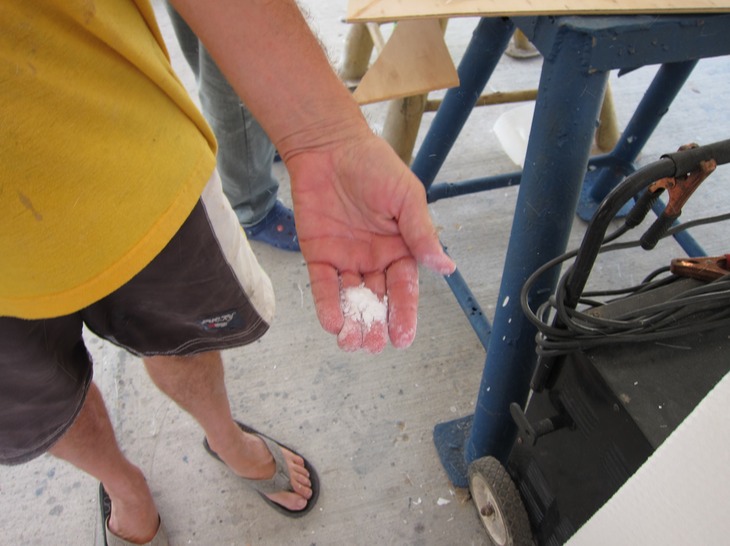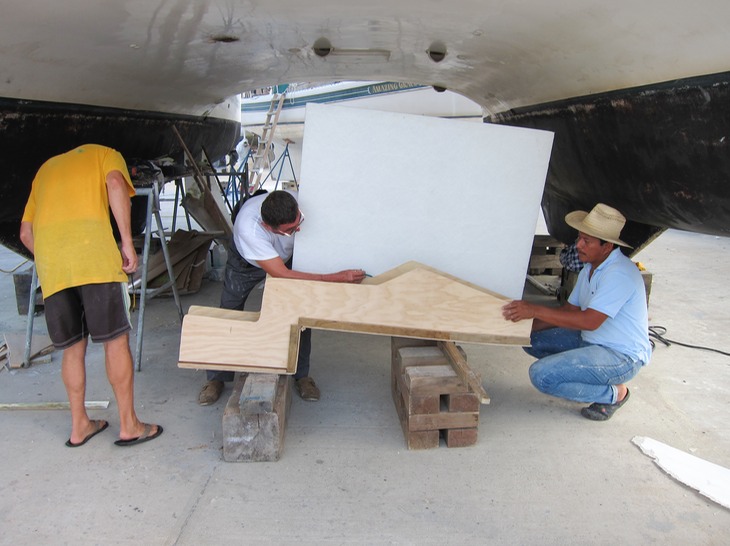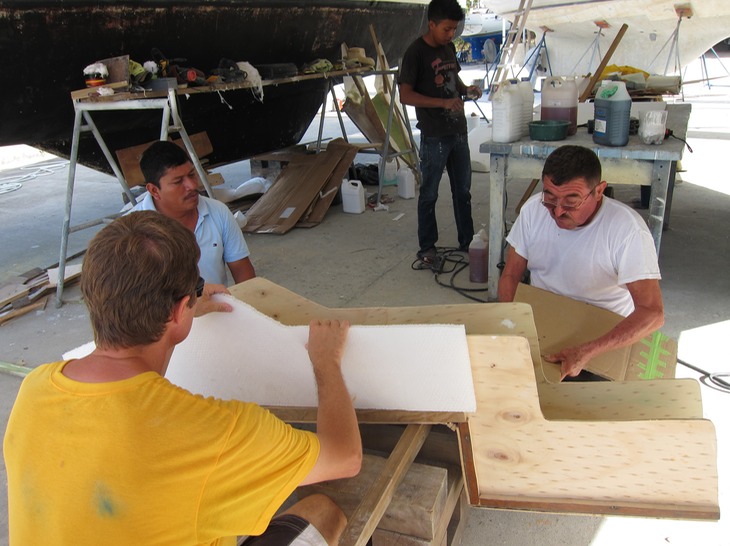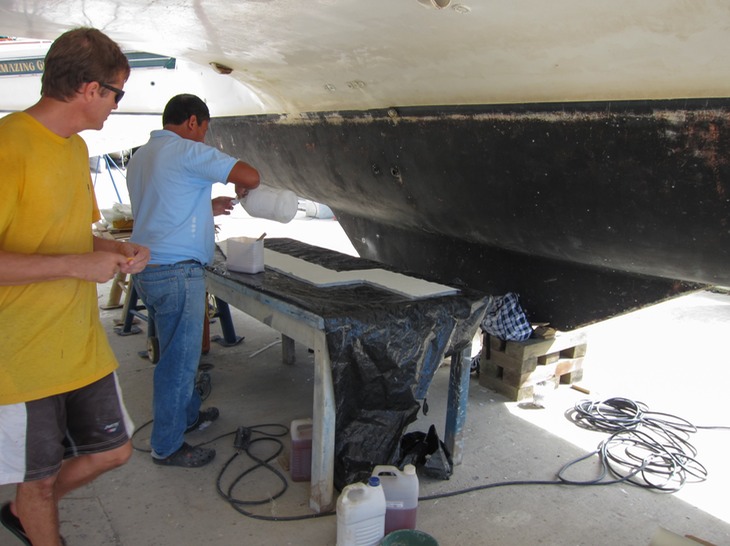Nidacore is a polypropylene (plastic) honeycomb structure that is used as an alternative to wood balsa core. In boat-building, core is used to add strength to deck or hull expanses without adding a lot of weight.
Desirable core properties are compression strength with minimized lateral water wicking. That is why balsa is used with wood grain going vertical, so that if water gets through the glass outerlayer (e.g. via screwed in deck hardware), it won't travel horizontally and get the entire deck wet. The honeycomb structure in nidacore and like materials also serves to trap any invasive water vertically and minimize lateral invasion.
We are using 1/2" nidacore on the steps and sides of the new stern. It will also be used to make the internal bulkhead. The former adds lateral strength and possibly sound-deadening to the new steps, while the latter will brace the old stern with new.
An important step in working with nidacore is to get a good chemical bond between the thin outer layer (polyester scrim) with the first layer of new glass, chopped strand side making contact.
If done right, the slightly flimsy nidacore plastic becomes hard as a rock and orders of magnitude stronger.
This little piece that I could easily break before it was glassed can now hold my entire weight.

Pieces of nidacore were glued to the undersides of the new steps, using cabosil mixed in resin. This is simply powdered silica (glass) and cut-up mat mixed into the polyester resin plus activator and thickened.
The mixture is then used to fillet the sides of the core to smooth out any sharp curves and make the cored surface easier to glass over with no air voids.
The last layer of biaxial fiberglass was then laid over top of the nidacore steps to complete the stern layup. The same will be done on the sides to comprise the new hull. Same drill: resin + glass + squeegee assembly-line.
Next, the bulkhead was made into a box-beam construction, using a plywood mold.
Mark had a highly accurate drawing based on measurements for the bulkhead (mamparo in Spanish).
Noé did use Mark's drawing, not for the measurements, but used the cardboard for a mock-up that he partially measured and then trimmed over and over again to-fit. Whatever works!
Mark stepped in to help Saul make the bulkhead mold, since the electric drill was more efficient than the manual way. The nidacore was cut into shape and glassed for a strong, custom bulkhead.




Ovals were drilled out of the top beam to allow for internal access when attaching the bulkhead to the original hull. It turned out super strong!